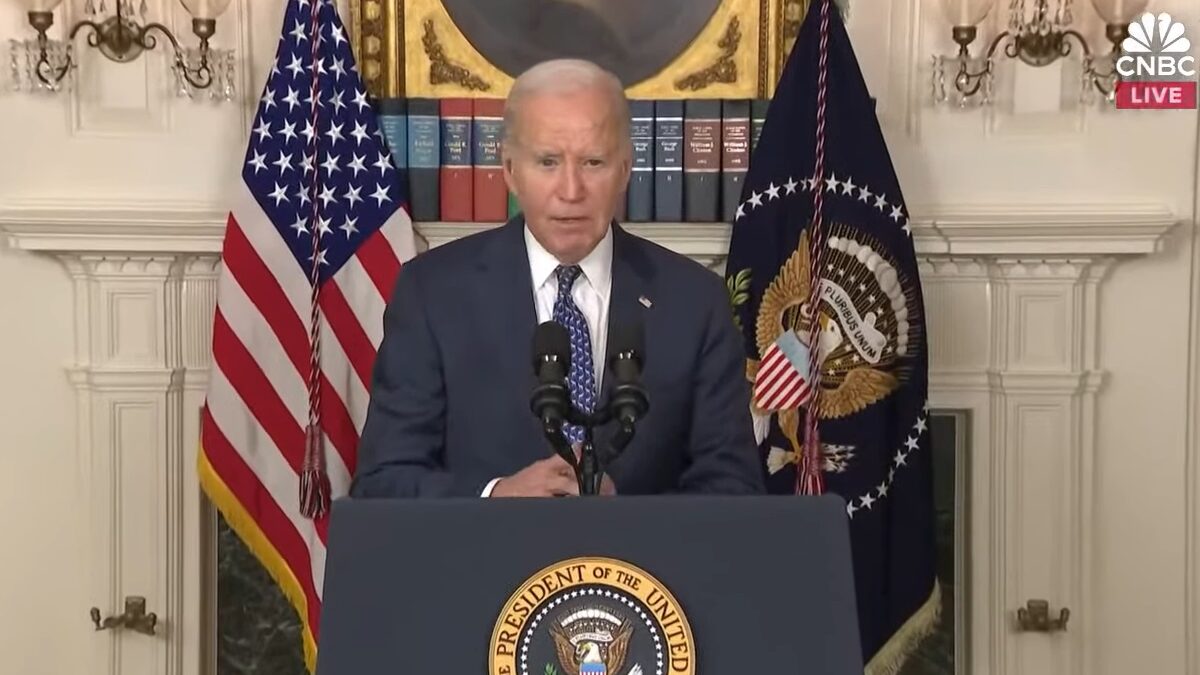
It’s called “proof by example,” and it happens all the time. We take one event and point to it as evidence of a trend or, even worse, a universal fact—a dog attacked my child, therefore all dogs are vicious and should be put down. Despite its popularity, particularly in political debate, proof by example is a logical fallacy. But logic is officially an endangered species in today’s hyperpartisan political environment.
Recent events nationwide, particularly the cold-blooded murder of nine black churchgoers in Charleston, South Carolina, at the hands of a revoltingly racist white supremacist, have propelled this faulty reasoning to new heights. Dangerous ones, in fact: the conversation surrounding race in America has rapidly evolved into a hyperbolic echo chamber into which today’s pundits, politicians, and professors repeatedly shout their false narrative.
OMGs, Guys, We’re So Racist!
The Washington Post’s Eugene Robinson declared, “America will only end racism when it stops being racist.” If anyone is guilty of proof by example, it’s Robinson: “The gunman who so coldly killed those innocent worshipers at Emanuel African Methodist Episcopal Church did not exist in a vacuum. He inhaled deeply of the race hatred that constantly bubbles up like foul gas from a sewer.”
Things are so bad that The New York Times’s Timothy Egan proposed that Barack Obama apologize on behalf of his country for slavery. You read that correctly. The president didn’t do that, but he did remind us that “racism remains a blight that we have to combat together.”
The most serious accusation, however, was lobbed from what has become the most ridiculously reactionary arena in all of American cultural and political life: academia. In response to the Charleston slayings, Occidental College Professor Caroline Heldman labeled America a “white supremacist society.” You hear that? Constant racism; America is a sewer; we are all white supremacists. Apparently the America of 2015 is identical to the America of 1860.
The Data Contradicts These Spurious Claims of Mass Racism
News to me, and if I had to guess to 99 percent of the other 300-plus million Americans that peacefully coexist with members of all races day in and day out. Unless, of course, I am so lucky as to “exist in a vacuum” of peace and tranquility light years beyond what most Americans experience. Judging from my neighborhood, and a few commonly ignored statistics, I highly doubt it.
Consider, for example, that in 1958 a mere 4 percent of Americans approved of interracial marriage. By 2013, that number had grown to 87 percent. In 2012 these once-taboo unions hit an all-time high.
Ku Klux Klan membership has shrunk drastically from millions a century ago to fewer than 5,000 today. The Black Panthers are essentially extinct. While plenty of other hate groups have attempted to fill the void, they have always operated on the margins of society. Black politicians are now common—President Obama’s percentage of the white vote was almost perfectly in line with that received by other recent Democrats, all of whom were white.
Granted, these statistics offer but a snapshot of American society, but the more one looks, the more a trend emerges. America is a lot of things; racist isn’t one of them. In fact, just a little more than two years ago The Washington Post, the same paper that featured Robinson’s editorial, found that America was in fact among the least-racist nations in the world.
But two years is an eternity in America’s collective consciousness, and the optimism of yesteryear has given way to today’s illusion of apartheid. The public laps up the false conflict and spits it right back out, fueling the very fire that the pundits, professors, and president claim to want to quell. Any country, particularly one of this size, will always contain dangerous outliers and instances of racism will almost certainly surface from time to time. People gonna people—that’s simple statistics, not systemic injustice.
The Civil Rights Movement Did Accomplish Something
But reality doesn’t sell newspapers, and clickbait feeds off conflict. Proof by example is too powerful a tool to let facts get in the way.
Consider the few tragic, high-profile cases of police brutality that recently gripped the nation: from Mike Brown to Eric Garner to the girl at a swimming pool in Texas, a handful of incidents have cast a pall over all 900,000 law enforcement officers working in the country today. Even after the destruction of Ferguson, Missouri, and Baltimore, Maryland, the media continues to sell the “cops versus blacks” narrative. A little arithmetic, however, reveals its absurdity: these three high-profile cases represent a whopping 0.0003 percent of all American law enforcement. If that number strikes you as a trend, then perhaps you should apply for a job at The Washington Post or CNN or, better yet, run for president.
If you’re still not convinced, consider this: if Robinson and Heldman are correct, then the civil-rights movement accomplished essentially nothing. All of those people who marched, fought, and even paid with their lives did so for nothing. All of Martin Luther King Jr.’s speeches, Medgar Evers, the sit-ins, all for naught. If we are still the same America that hangs black people from trees in plain view while the rest of us go about our lives, then the movement that those pundits claimed shaped their philosophy was a sham.
Of course, that isn’t the case. Most of us interact with people of numerous races daily without conflict or incident. Our friends, and even spouses, have skin colors different than ours, as do our teachers, doctors, and nurses. That’s because proof by example isn’t reality, and the actions of one man or three cops do not define a society of more than 300 million.









